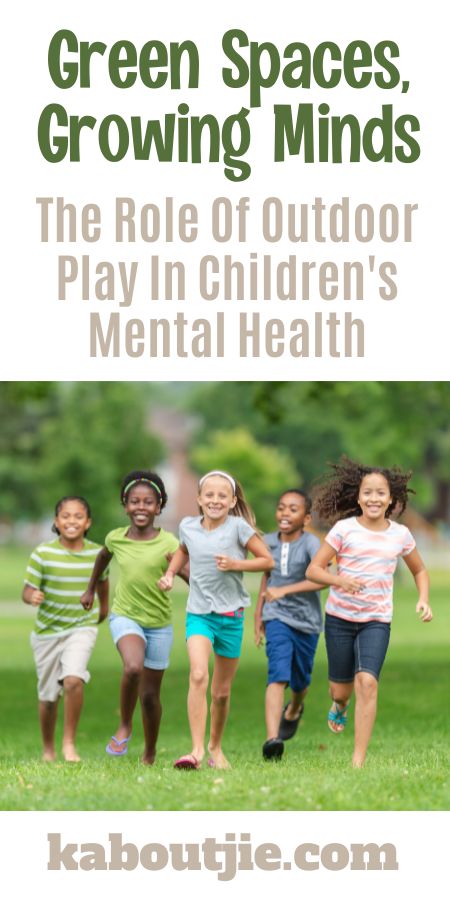As we think back to our childhoods, most of us have fond memories of playing outdoors – the exhilaration of climbing trees, discovering hidden trails, or the joyous afternoons spent on a Single Swing. These often taken-for-granted experiences hold immense power and significance for our children’s mental development and overall well-being.

The Science Behind Play: Learning Through Laughter And Leisure
Outdoor play is not just about having fun; it also serves as a practical and essential tool for learning. Outdoor play enhances problem-solving abilities, fosters creativity, encourages resilience, and stimulates cognitive development. Furthermore, it is instrumental in nurturing social skills. Through play, children learn to negotiate, cooperate, and share, forming the basis for essential life skills.
Swinging To Well-being: More Than Just A Playground Staple
Swings have a unique place in the realm of outdoor play. Whether it’s a Double Swing ride filled with shared laughter or a solo swinging session, these seemingly simple structures provide not just physical exercise but also psychological benefits. The rhythmic motion of swinging offers a sense of security, enhancing children’s focus and concentration.
The Green Effect: Nature As A Therapeutic Space
Green spaces offer a sanctuary from the hustle and bustle of modern life. Spending time in nature can reduce stress, alleviate anxiety, and enhance mood. The tranquillity that these spaces offer plays a vital role in supporting mental well-being, offering a respite from the sensory overload of urban environments.
The Digital Dilemma: Balancing Screens With Green
In the digital age, the lure of screens is strong. While technology provides many learning opportunities, excessive screen time and the associated sedentary behaviour can lead to physical and mental health issues. Outdoor play offers a vital counterbalance, providing a digital detox that encourages physical activity, sensory engagement, and real-world social interactions.
Beyond The Parks: Everyday Green Spaces Around Us
When we talk about green spaces, it’s not just about large parks or sprawling forests. Green spaces can also be a small garden, a community playground, or even a patch of grass in the heart of the city. These easily accessible green environments offer children plenty of opportunities for outdoor play and exploration, promoting their mental well-being.
Community And School Involvement: Making Green Spaces Accessible
Urban planning and community development must prioritise green spaces to ensure all children have access to the benefits of outdoor play. Schools should incorporate outdoor activities into their curriculum, promoting a balanced lifestyle for students.

The Way Forward: Prioritizing Green Spaces For The Future
The role of green spaces in children’s mental health cannot be overstated. As we look towards the future, it’s crucial to ensure that outdoor play continues to be a cornerstone of childhood. This requires building communities where green spaces are valued and preserved and where children are encouraged to learn and grow through their interactions with nature.
Green Spaces And Mental Health: Digging Deeper
Green spaces can boost self-esteem and mood in children, making them feel more relaxed and comfortable. Nature’s calming effect also helps manage conditions like ADHD, contributing to improved concentration and reduced hyperactivity.
Nature-Based Learning: An Unconventional Classroom
Schools can use green spaces as ‘outdoor classrooms’ that offer experiential, hands-on learning. Children can explore biology by observing plant life, understand physics principles through playing on swings, or learn math while engaging in treasure hunts. This kind of learning can increase student engagement, retention, and motivation.
Building Green Play Spaces: A Design For Wellness
Green spaces and play areas should be designed with children’s mental health in mind. This means creating safe, inviting environments that spark curiosity and promote physical activity. Natural play materials (wood, sand, water), different levels for climbing and exploring, hidden corners for imaginative play, and communal spaces for social interaction can make these areas more engaging and beneficial.
Families And Green Spaces: Strengthening Bonds, Nurturing Health
For families, green spaces can become a platform for quality time. Outdoor activities allow parents and children to disconnect from their routine lives and share experiences, fostering stronger relationships. Parental participation in outdoor play also provides emotional support and guidance to children, enhancing their confidence and self-esteem.
Overcoming Barriers To Outdoor Play
While advocating for outdoor play, it’s also necessary to address barriers that limit children’s access to it. These can include safety concerns, lack of nearby green spaces, or societal pressure for academic achievement. Raising awareness about the mental health benefits of outdoor play among parents, educators, and policymakers can help overcome these hurdles.
Green Spaces And Public Health: An Intersection
Green spaces aren’t just beneficial for children’s mental health; they also contribute to community well-being. They offer opportunities for physical activity, reduce air and noise pollution, and can even boost local economies by increasing property values and promoting tourism. Thus, investing in green spaces is a win-win for public health and urban development.
Outdoor Play And Physical Health: A Dual Advantage
While we’ve emphasised the mental health benefits, we shouldn’t overlook the physical benefits of outdoor play. Engaging in physical activities, from running and jumping to swinging and climbing, helps children develop their motor skills, improve their strength and agility, and maintain a healthy weight. Sunlight exposure during outdoor play can also help their bodies synthesise Vitamin D, which is crucial for bone health and immune function.
Eco-therapy: A Natural Prescription For Well-being
Eco-therapy is a form of therapeutic treatment that involves doing outdoor activities in nature. This can be as simple as a walk in the park, gardening, or even birdwatching. For children struggling with mental health issues, eco-therapy can provide a soothing and calming effect, serving as a complementary approach alongside traditional therapies.

Children’s Interaction With Wildlife: Building Empathy And Compassion
Interactions with wildlife are an enriching part of outdoor play. Observing animals in their natural habitats can nurture a sense of empathy and compassion in children, helping them understand the interconnectedness of all living things. It can also spark their curiosity and inspire a lifelong passion for wildlife conservation.
Outdoor Play And Independence: Fostering Self-reliance
Allowing children to play outdoors, especially in unstructured settings, can help them develop a sense of independence. They learn to navigate their surroundings, make decisions, and deal with challenges on their own. This self-reliance can boost their confidence, enhance their problem-solving skills, and contribute to their mental resilience.
Conclusion: Green Spaces – A Legacy For Future Generations
Green spaces are the canvases where children paint their experiences, dreams, and learnings. As guardians of their mental health and well-being, it is incumbent upon us – parents, educators, and policymakers – to preserve and enhance these spaces. So, let’s pledge to give our children the gift of green, for it is in these spaces that their minds grow, their creativity flourishes, and their futures take shape. As we strive to shape a healthier, happier world for them, let the call of the wild – the rustle of the leaves, the whisper of the wind, the laughter echoing from a swing – be our guiding symphony.
 Kaboutjie SA Mommy Blogs by Lynne Huysamen
Kaboutjie SA Mommy Blogs by Lynne Huysamen





This is a very educational article thank you for taking the time to share the wonderful knowledge with us.